WDTV Live
I used to think I have to save a whole bunch before I can have a networked media centre PC or Mac Mini solution in order for me to watch anime on my TV in the living room. I had at one point considered the HP Media Centre solution but couldn’t really see myself buying another Windows machine that needs a lot of maintenance to keep it going. I also thought about a Mac Mini but it has always been a bit too pricy for me when I add the wireless mouse and keyboard to the equation. Well, thanks to the recent advancement of networkable media players in the market, I finally can enjoy my anime collection without having to sit in front of a computer.
Criteria I have for the right media player includes:
- Decent picture quality
- MKV file support, which is pretty much the most popular HD video container currently being used
- HDMI output to reduce the number of cables to connect to my TV
- Networkable, because all my anime is in my Home Server
- Firmware upgradable
I read about a few different players including the Seagate Free Agent Theatre, ASUS O’Play and the recently released WDTV Live. They all have different strengths. After a little bit of digging around in forums, I decided to give the WDTV Live a try.
The first unit I got (back in Oct) actually did not work. It turned on but it did not have any video signal regardless of which output connection I used. The unit did not respond to the remote control either. It was a lemon. I sometimes have this kind of luck with hardware. So I returned it but I couldn’t get a replacement at the time as it was out of stock for about a month. So finally it was available from NCIX again with a $10 discount from their retail price. So buying it at $130 was a no brainer for me.

The packaging is compact. Even though it is not the most eco-friendly packaging, the unit itself is so small that the packaging does not waste a lot of materials. Inside the box you will find the media player unit, a remote control, a power adapter, some instructions, software CD and batteries for the remote. It is so nice to actually see batteries included as opposed to having to find batteries while deboxing (that would have spoiled the fun, wouldn’t it?). They also give you a small sheet of stamped rubber that you can peel 4 rubber feet from, and you apply the rubber feet to the bottom of the unit to provide some grip when it is placed near your TV.
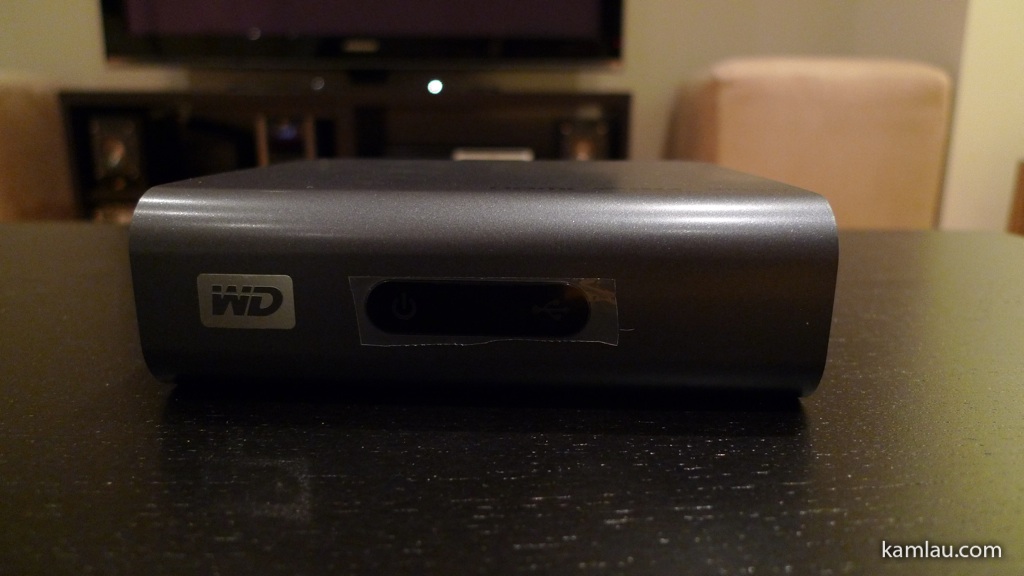
The front of the unit is pretty simple. Just the WD logo and a couple LEDs. One for power and another one for USB indicator should you have a USB drive connected to it. There is also an infrared receiver behind the piece of plastic where the LEDs are located.
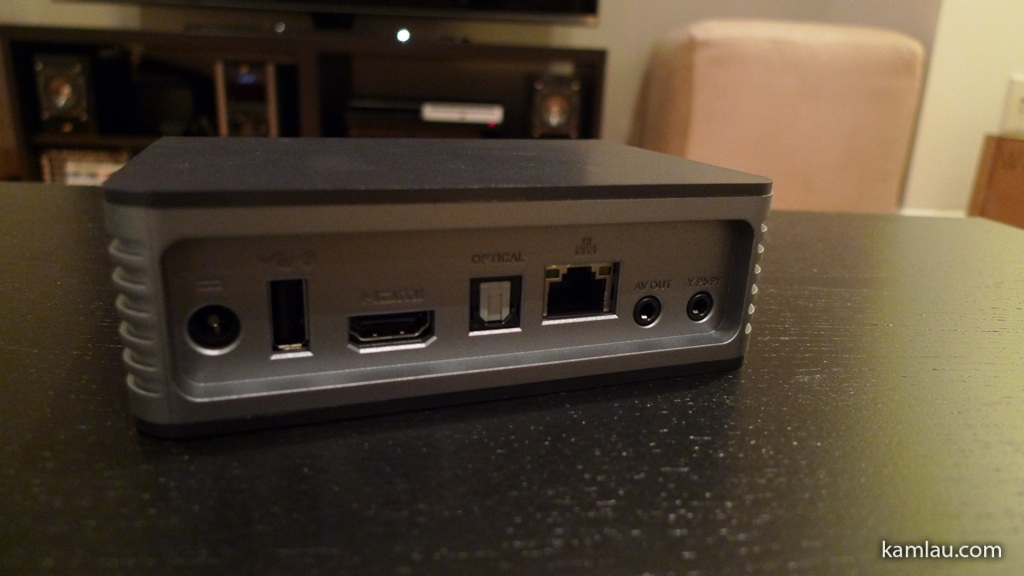
The back of the unit is very well organised. It does not waste any space at all. From the left, we have the power socket, USB connector, HDMI output, optical audio output, ethernet port, regular RCA AV out port and a Component video output port. I am glad that it provides all these options though I am only interested in the HDMI output and the ethernet port.
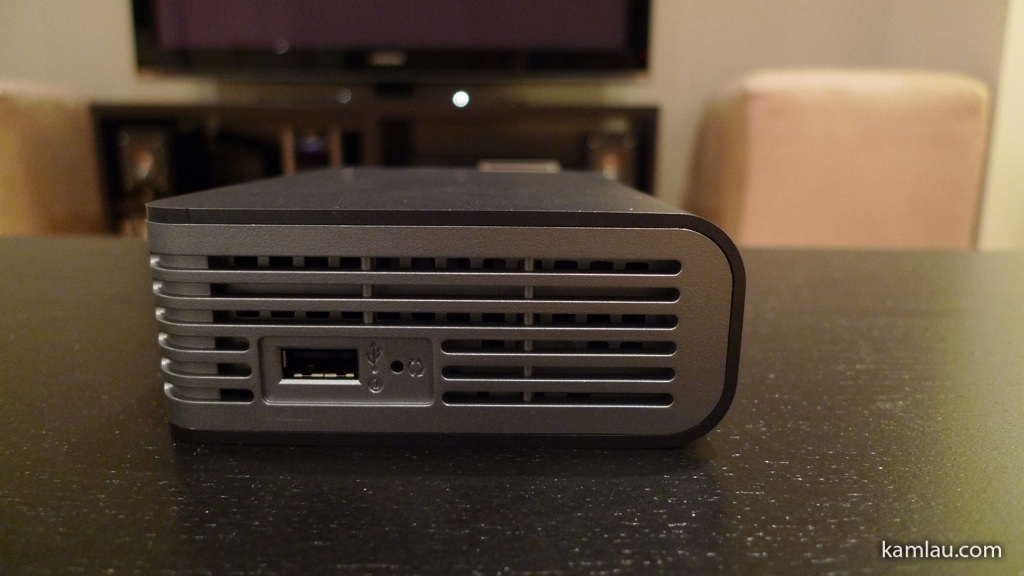
On the left side of the unit is another USB port and a reset button.
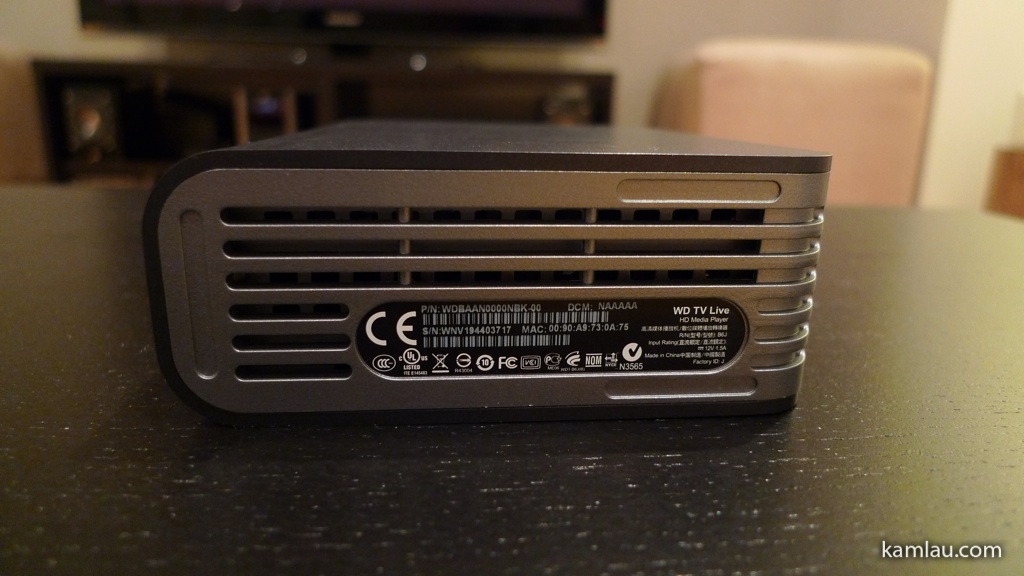
The right side of the unit has just a label, there are no connections on this side.
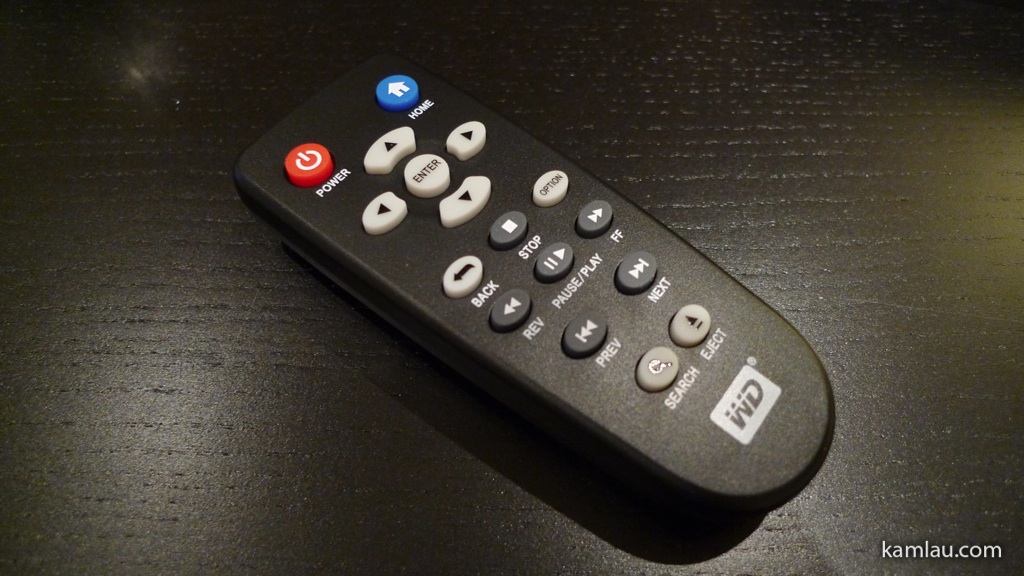
The remote, as many users have indicated, is a bit small. I have small hands and I found it difficult to use. But it does take up very little room when I have to store it away so I am indifferent about the size.
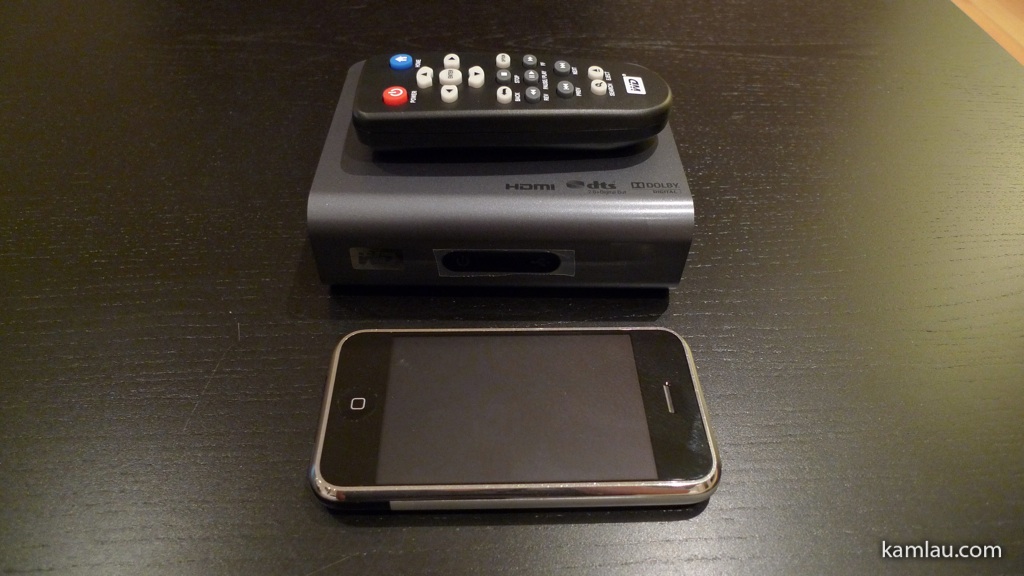
Compared to the iPhone, the unit is just a little bit wider.
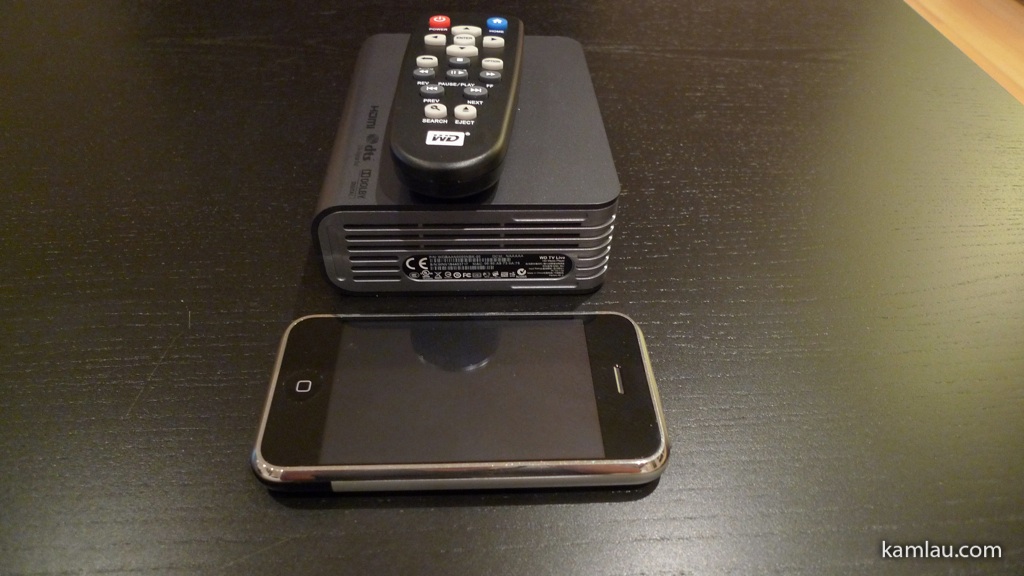
And it’s depth is not as long as the iPhone. It is a very compact media player.

I also picked up a generic HDMI cable from NCIX at $6. It even has right angle connectors.
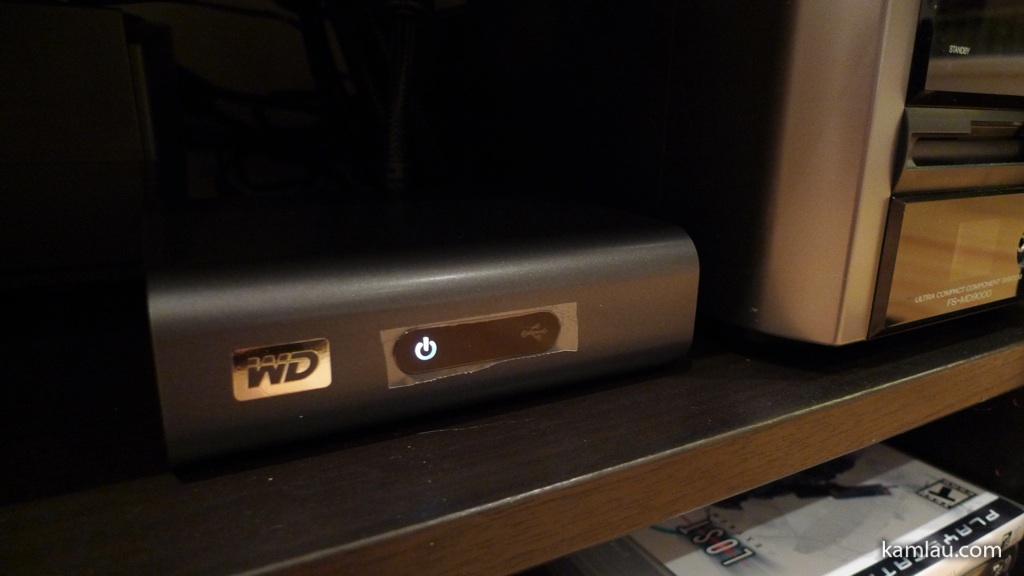
After fiddling around with the cables and tucked everything hidden from our cats, I turned it on and the power LED lights up. So far so good… I also have it connected with an older Airport Express Base Station. It is only capable of connecting using 802.11G. I am interested in seeing how the WDTV Live performs using a slower wireless connection before buying more hardware. The Airport Express Base Station is setup as a bridge that extends the wireless network.
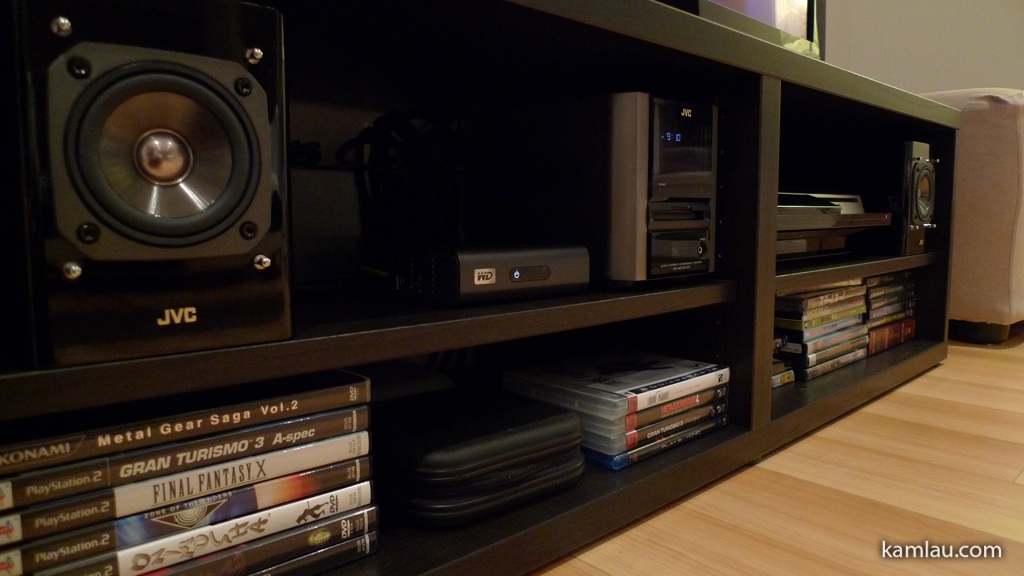
The unit is so small that it is essentially not very noticeable.
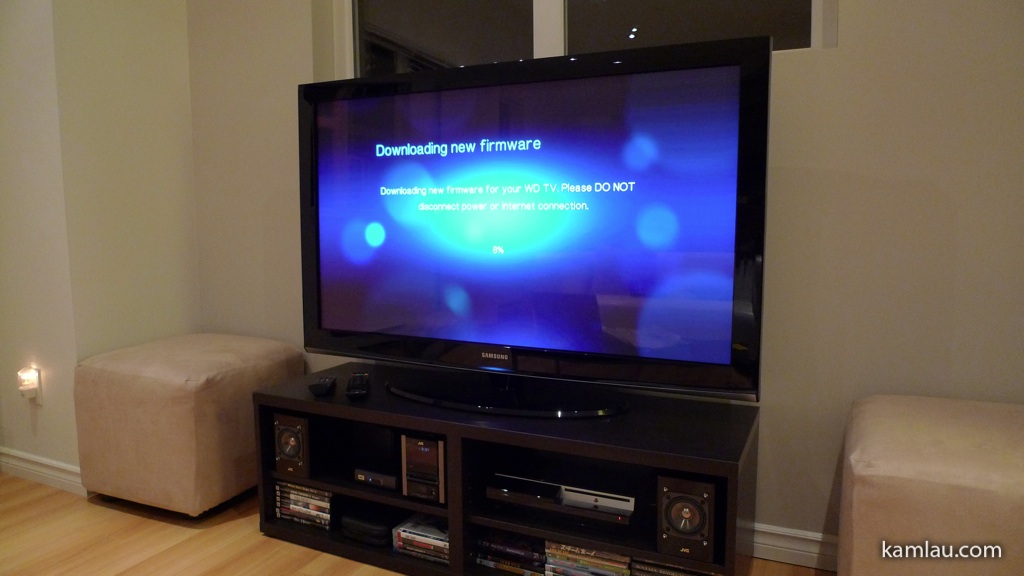
The first time I booted it up, the unit detected that there is a newer firmware from Western Digital and prompted me to download the new firmware.
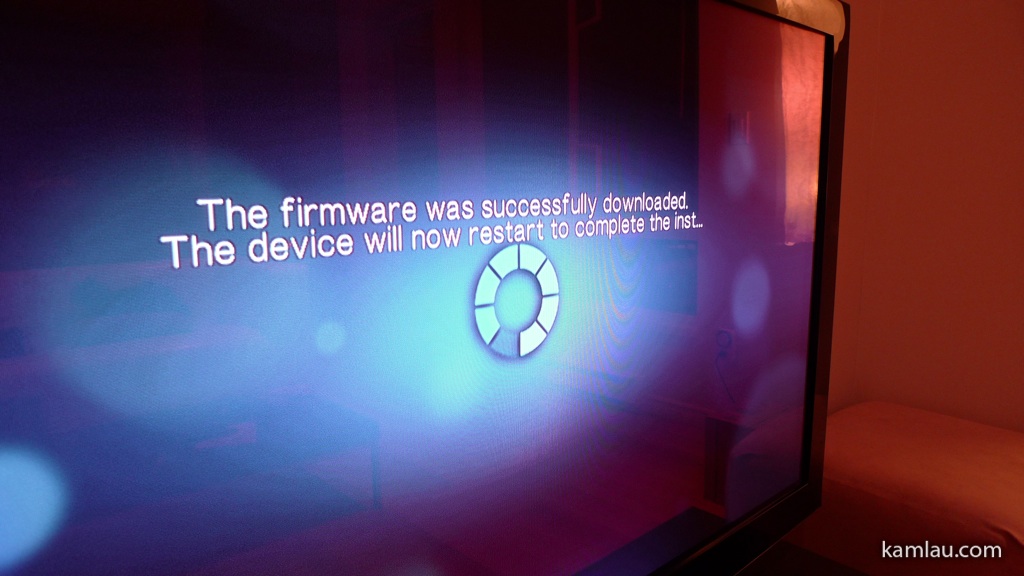
Once the new firmware finished downloading, the unit restarted itself.
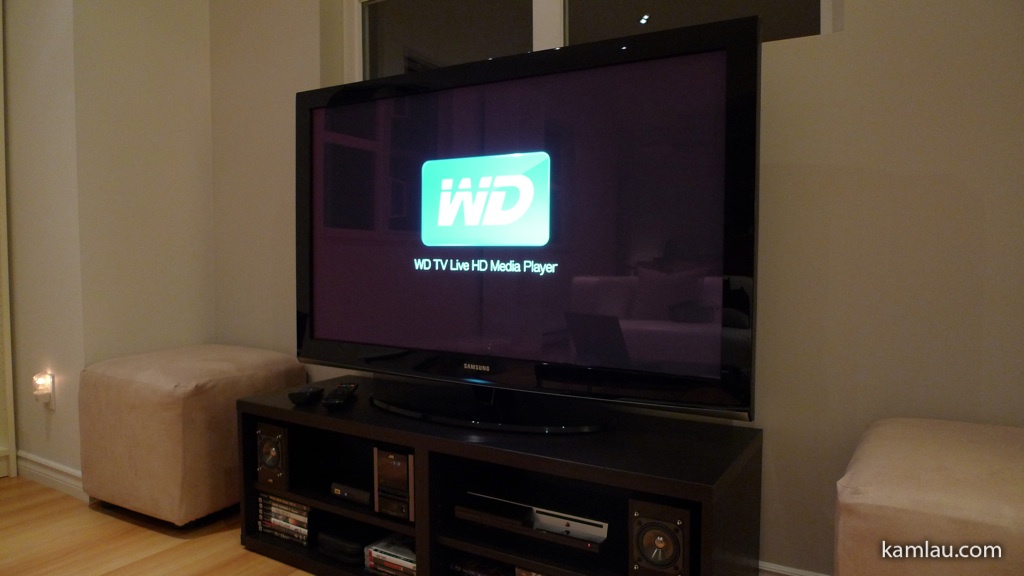
It only takes about half a minute for the unit to reboot. That is faster than a media centre PC or a Mac Mini.
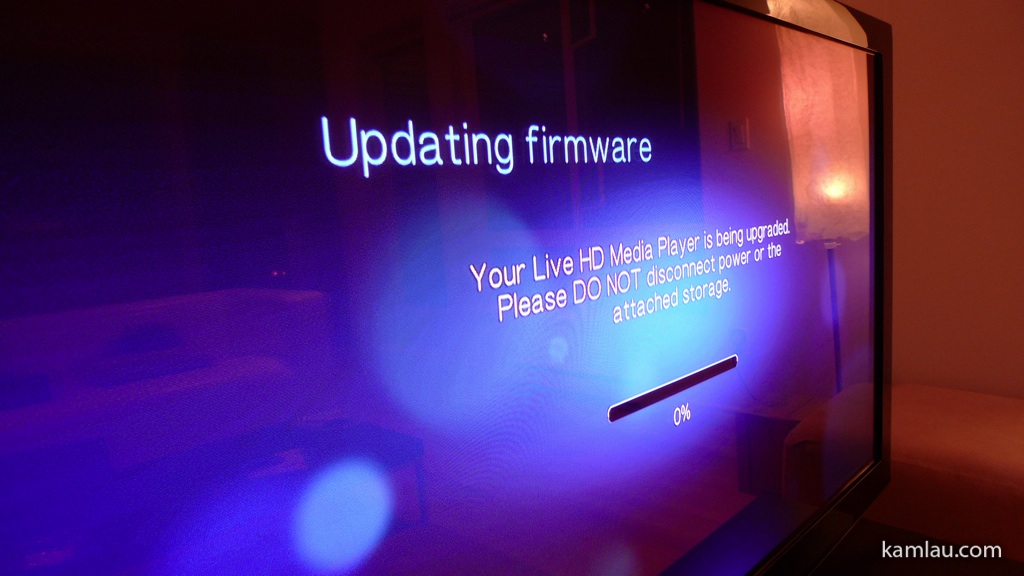
Then firmware update happens right after it rebooted.
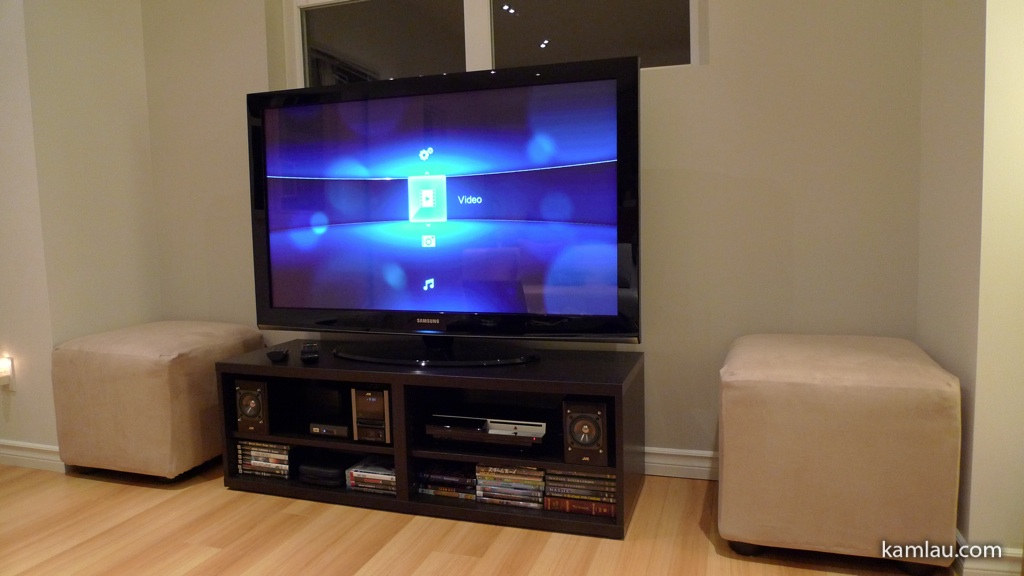
After the firmware update, it reboots again. Upon finishing rebooting, you will be presented with the default manual.
I am not a sales person, so instead of me showing you what it does, here are some videos from Western Digital to highlight some the cool features and different ways to set up the WDTV Live:
I will continue with my review in another post sometime this week specifically about how it works with the 802.11G wireless network.
How do you enjoy your anime or HD movies on your HDTV?
![[KL]-1 kamlau.com](http://kamlau.com/wp-content/uploads/2016/03/KL-1.png)
![[KL]-2](http://kamlau.com/wp-content/uploads/2016/03/KL-2.png)










Ooooh I think this is what my friend uses to watch anime at his place. I usually just connect the computer to the TV because the video card has TV out and they’re close to each other. I suppose if I place the PC away from the TV then I may need this, but for now I guess I’ll stay with the current system. Good to know there are other solutions though, especially ones for MKVs…
.-= lightningsabre´s last blog ..On the Dinner Table =-.
It is convenient to have a small media player like the WDTV Live. But because it is designed as an appliance, it only has a remote control for user input. So typing using the on-screen keyboard is probably the most unpleasant thing about this unit. Other than that, it is pretty rock solid so far.
you can connect usb keyboard for easier input.